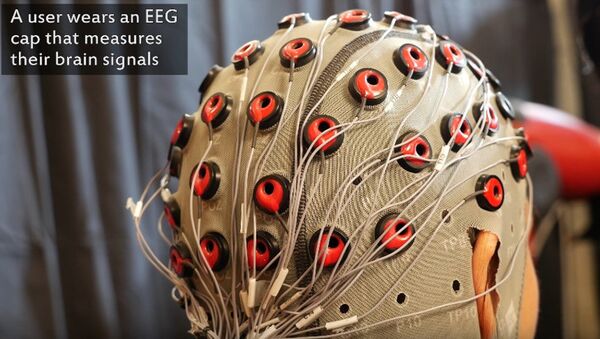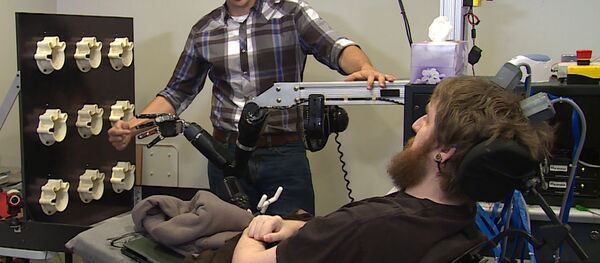Robots are increasingly being used to carry out more and more complex routine work to replace work done by of humans, but artificial intelligence does not always function perfectly, with robots sometimes misidentifying objects and setting them in the wrong place.
A system from @MIT_CSAIL enables people to correct robot mistakes using only brain signals. https://t.co/xRPWW40Z58 pic.twitter.com/3CVd34YIML
— MIT (@MIT) 6 March 2017
The scientists have now developed a system whereby humans can point out behavioral errors using a feedback loop using "brainwave" technology — known as electroencephalography (EEG) — using brain signals to give feedback to robots.
"Imagine being able to instantaneously tell a robot to do a certain action, without needing to type a command, push a button or even say a word. A streamlined approach like that would improve our abilities to supervise factory robots, driverless cars, and other technologies we haven't even invented yet," said MIT's Computer Science and Artificial Intelligence Laboratory Director Daniela Rus.
"As you watch the robot, all you have to do is mentally agree or disagree with what it is doing. You don't have to train yourself to think in a certain way — the machine adapts to you, and not the other way around," said Rus.
Errp What?
The researchers say that when humans see a robot making a mistake, the brain generates an "error-related potential (ErrP)" signal, which could be captured to trigger and instant "stop" message to which the robot responds and learns.
Thus, one robot simply picking up a series of different objects and placing them into separate bins could be prevented from putting an object into the wrong bin and told to rethink its actions.
The principle is not new, however. EEG signals have been used with motor imagery tasks to control drones, wheelchairs and robotic arms.
The error-related potential (ErrP) signal is consistently generated when a human consciously or unconsciously recognizes that an error has been committed. Researchers believe ErrPs are an integral component of the natural trial-and-error learning process.
They are typically detectable within 500 milliseconds of when the human observes the error. This suggests that error-related signals are particularly well-suited for use in robotic tasks.





